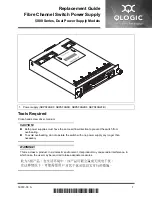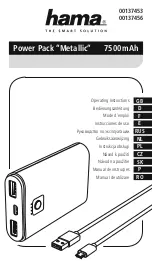
35
© 2018 Dehaco B.V. • Operation and maintenance manual IBEX Hydraulic breakers G-type – Version 17-08-2018
Appendix-1 Underwater operation
A-1.3 Storage
WARNING!
Ø
Perform routine checks and required maintenance
before storage. This will ensure a longer life span
of the breaker.
WARNING!
Ø
The wearing parts of the breaker deteriorate much
faster underwater. Ensure that these are regularly
inspected.
A-1.3.1 Short term storage
◊ In order to drain the water completely from the
breaker, operate it on dry land for several minutes
whilst supplying compressed air.
◊ It is difficult to operate the breaker under the
aforementioned conditions. Run the excavator at
low RPM’s and idle the breaker 5 to 6 times whilst
maintaining the air supply.
A-1.3.2 Long term storage
1) Clean the breaker and carry out the short term
storage maintenance.
2) Cover the breaker with a waterproof cover to
ensure that it remains dry for the storage period.
3) It is strongly advised to store the breaker in the
vertical position. The use of a stand to place the
breaker in is for safety strongly advised.
A-1.4 Safety Device
In order to minimise the risk of water entering the
breaker, the underwater kit is supplied with a choice
of safety devices. The purpose of this is to either alert
the operator of a loss of pressure using an alarm. Or
to immediately stop the breaker using a pressure
switch mounted within the excavator. These solutions
safeguard the breaker from the injection of water,
and can be installed by Dehaco or one of its approved
dealers.
A-1.5 Maintenance Intervals
◊ The IBEX breakers are designed for underwater
operations of only a short duration.
◊ The wear resistance of breaker parts is
considerably lower in underwater conditions than
in normal use. This is due to the corrosive nature
of the underwater conditions.
◊ During underwater breaking, routine inspections
must be performed more often. For example
every half hour of operation.
◊ Adapt these inspections dependant on the
working conditions.
A-1.5.1 Procedure
Every half hour of operation
1) Grease the tool shank and the tool bushing
using the grease nipples. (If auto grease pump
is installed, ensure it is working correctly. It may
need to be re-adjusted to supply a larger quantity
of grease).
2) Inspect the movement of the body within the
housing to ensure that the buffers have not worn.
3) Inspect all hoses and connections. Re-fasten if
they are loose.
4) Check the operation of the air pressure switch and
other safeguards.
WARNING!
Ø
Automatic lubrication pump should be suitable
for underwater application. Contact Dehaco or an
approved dealer for information.
Daily
1) Remove the retainer pin and tool for inspection.
Grind away any burrs if necessary and inspect for
abnormal wear.
2) Inspect the tool and bushed for sufficient greasing
3) Breaker maintenance after underwater work
4) The breaker must be totally dismantled and
serviced after working underwater for a long
period of time.
5) Inspect and clean all of the components and either
replace or repair damaged parts.
6) Re-assemble the breaker using new seals
7) Neglecting the breaker after underwater work can
cause severe damage.
8) Without correct maintenance and servicing the
rust can form on the piston in a matter of days
depending on the environment.






































